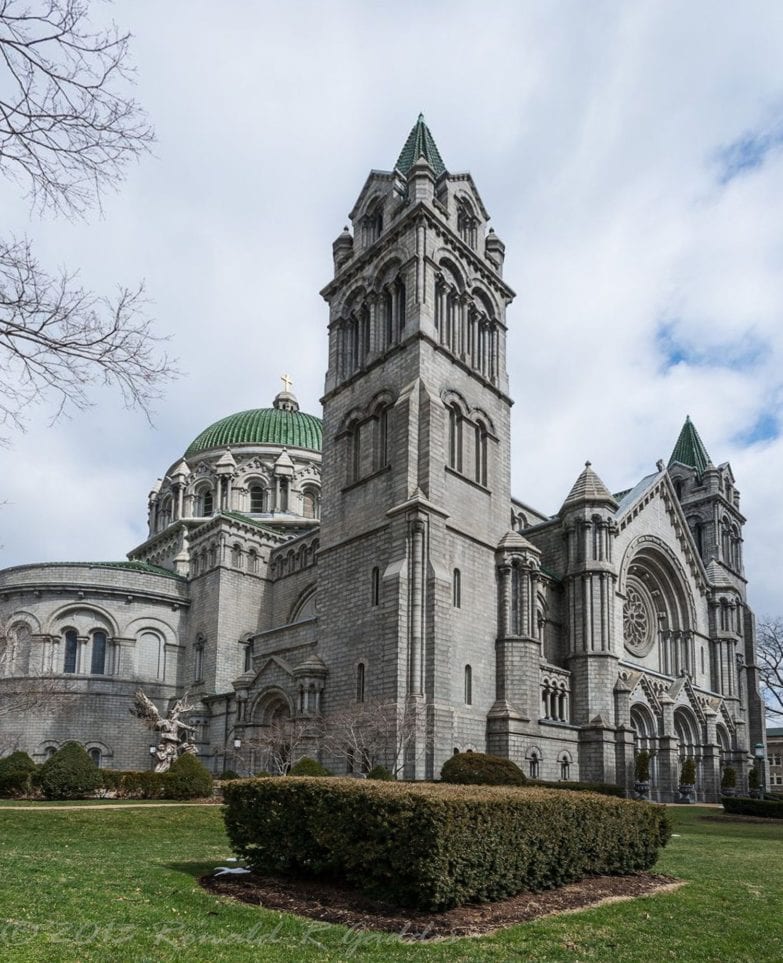Many people would define the 100-year-old Cathedral Basilica of St. Louis as beautiful, maybe even breathtaking, especially the interior, which is decorated with one of the largest collections of mosaic art in the western hemisphere.
Cathedral Basilica of St. Louis: Photos courtesy of IFSIt is precisely this art collection that posed some unique challenges for the team at Integrated Facility Services (IFS) when they were asked to upgrade the renowned structure’s HVAC system.
To improve energy efficiency, enhance indoor air quality, and help preserve the historic mosaics, SMACNA contractor IFS of Fenton, Missouri, installed a new air-cooled chiller and replaced a single chilled water pump with a new dual-duty standing chilled water pump for redundancy.
The IFS team also replaced the air handler unit (AHU) for the altar sanctuary and installed new controls on all units and on three existing AHUs that had originally been installed in 1912. Variable frequency drives were added to the new air handling unit and pumps to improve performance and efficiency. The system can now be securely controlled via smartphone or over the internet.
Kurt Voss, IFS vice-president of engineering, found the project exciting, partly because it was so unusual. It involved some creative thinking to determine an efficient way to give the cathedral chilled water redundancy to improve air quality and preserve the artwork at the same time.
The original system ran with wild coil, which means it had no control valves on it and therefore the chillers would not run as efficiently. “They don’t run as efficiently, and we don’t get as much capacity out of the chillers if we don’t have full control over where we’re sending our chilled water to,” he said. So, the team spent some time “trying to figure out how we could make the new chiller work with the existing power sources, what kind of features were needed, and what sequences we had to control in order to dehumidify and save energy at the same time.”
One challenge was working on the project when the neo-Byzantine Romanesque Revival cathedral was open and in use during the upgrade, including holding a daily Mass along with other events.
A second challenge involved getting from the cathedral to the cathedral’s central plant. Much of the work took place in the central plant, which was connected to the cathedral’s basement through a tunnel that ran under the parking lot. Workers had to crawl through the tunnel while avoiding piping and utility wiring.
The cathedral was built in 1907, which meant that planning the project with building information modeling (BIM) wasn’t an option. No models exist for a building of that age and layout, Voss explained. The team did, however, draft everything using 3D modeling.
Safety concerns on the project were minimal, so IFS focused on keeping the workers comfortable. The central plant wasn’t air-conditioned, so fans helped moderate the temperature and extra lights brightened up the work area.
The cathedral’s 83,000 square feet of mosaic art will be well preserved by the new air-cooled chiller, which will remove moisture from the air.
“If we have an air handler running at normal speed with 45-degree water, we would expect somewhere around 55-degree air to come off the coil,” Voss explained. “But if we slow that air flow down and still have our 45-degree water going through it, we might be able to get 47-degree air off of it, which allows us to ring out a lot more of the moisture, really drying that air out.”
“There’s a sense of pride there,” Voss added, “knowing that we’re helping the facility be preserved. It’s not just air conditioning for the visitors, but we are actually preserving history.”
